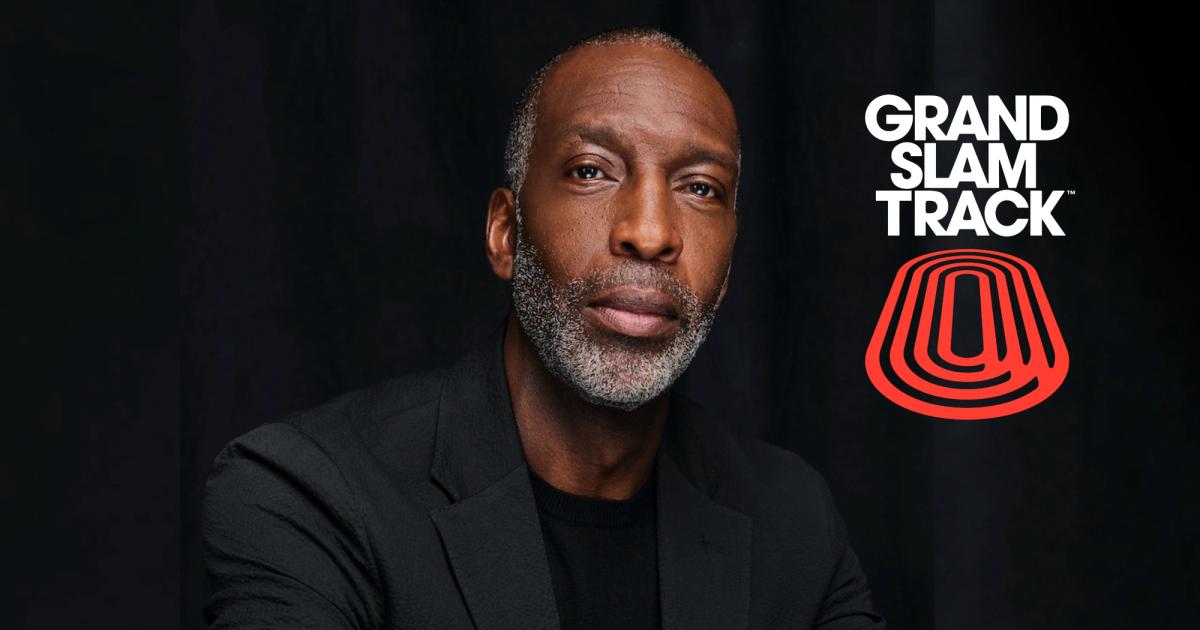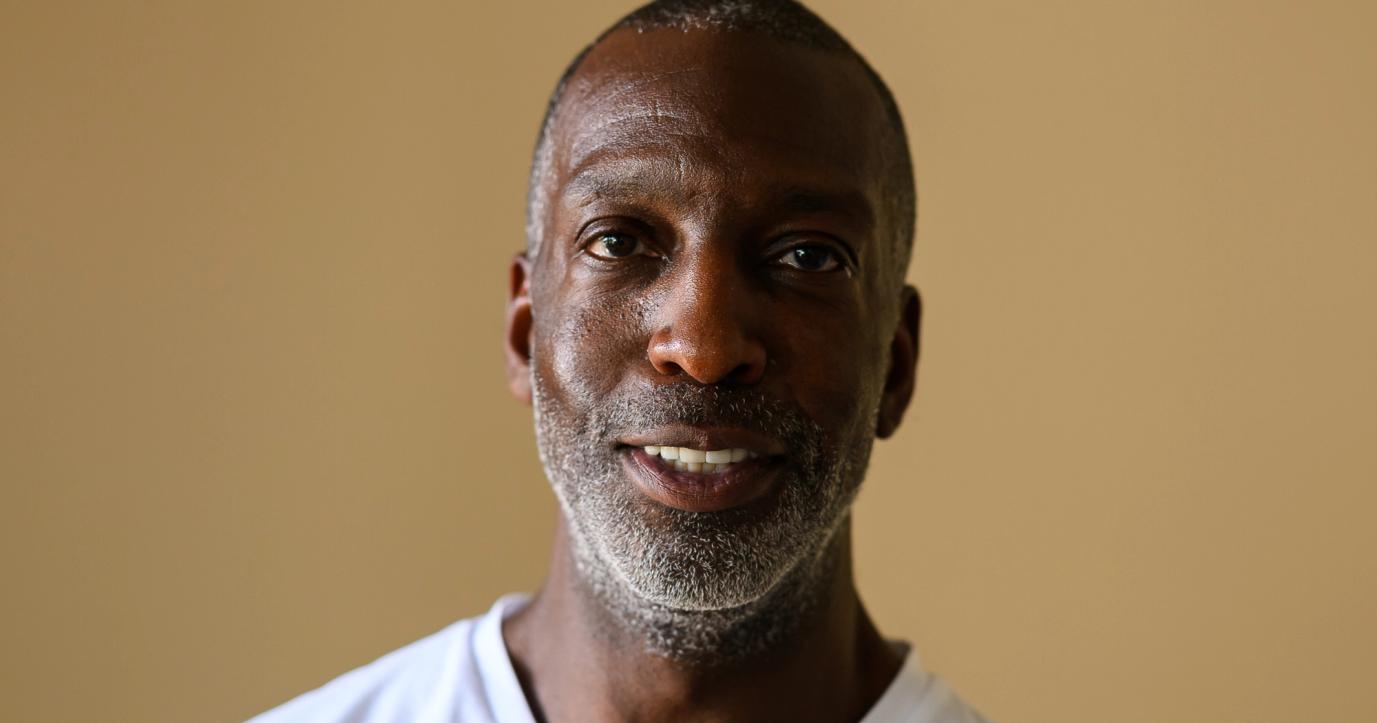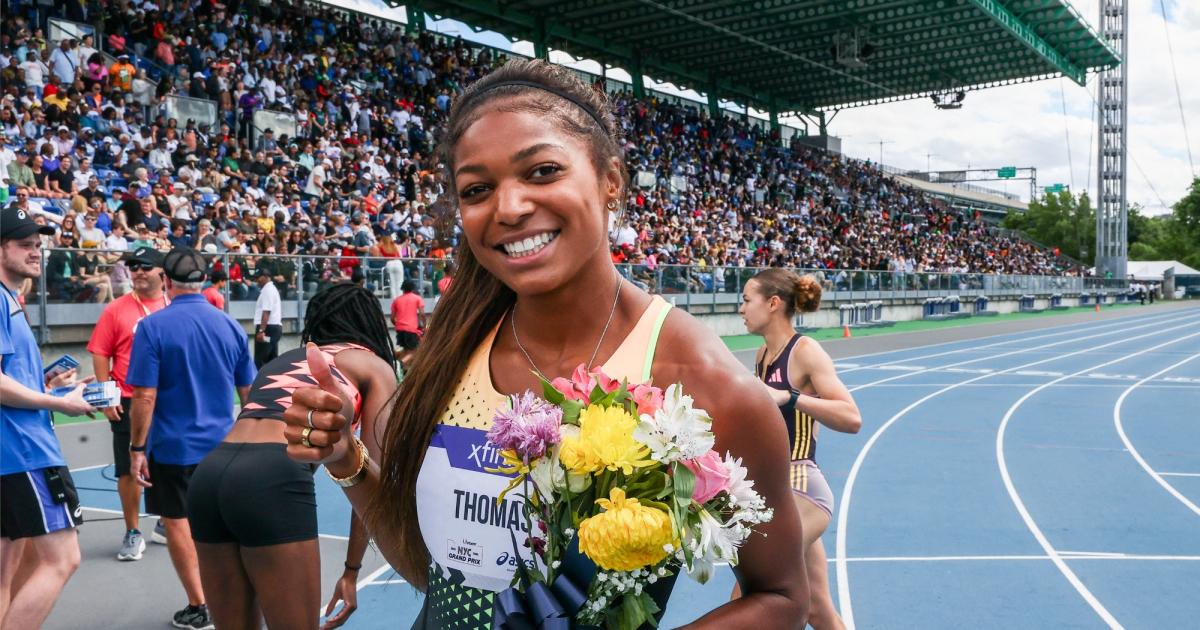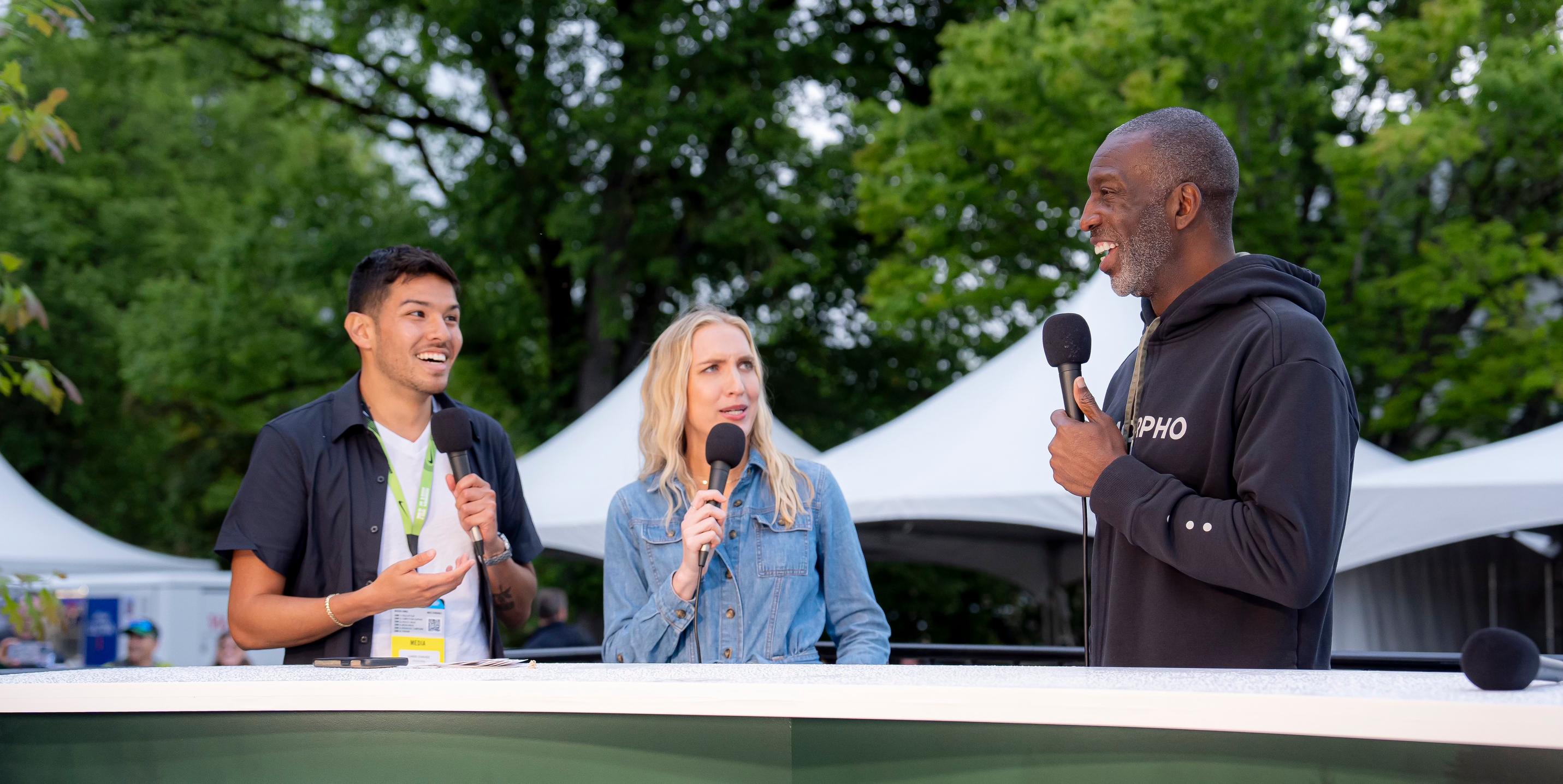By Chris Chavez
June 18, 2024
Michael Johnson has officially announced the launch of Grand Slam Track, a professional track league aimed at bringing together the best sprinters and distance runners for four marquee meets in 2025.
“I am delighted to finally unveil Grand Slam Track to the millions of track fans around the world,” Johnson said in a press release. “We are excited to launch this new platform for the planet’s greatest racers in this sport we all love. Our team has worked tirelessly to design and build a product that will be loved by fans and provide opportunities for our racers that they truly deserve. We’re revolutionizing the track landscape, allowing our sport to remain at the forefront of the sporting world year-round, and pushing our superstar racers to break new ground in their personal storytelling, competitive success, and marketability. Grand Slam Track is going to take our sport to new heights, and we want you to come along for the ride.”
GST also announced its first athlete signing: 400m hurdles Olympic champion and world record holder Sydney McLaughlin-Levrone.
“I’m honored to be one of the first Racers in Grand Slam Track,” McLaughlin-Levrone said in the release. “Michael’s vision is clear, and he’s exactly the leader this sport needs to break new ground. I am thrilled to be a part of this league and look forward to everything we have coming in the future. I firmly believe that this is the step forward that track needs to take it to another level, and I can't wait to get to work with the team.”
Johnson sat down with me for a one-on-one interview on The CITIUS MAG Podcast to share details about the league.
Here is everything you need to know about the league:
Backstory
When Johnson chatted with CITIUS MAG at the 2022 World Championships, we jokingly said he would make for a great commissioner for the sport. Johnson has remained involved in track through business ventures and his commentary on BBC and Twitter. However, given the current structure of USA Track and Field as the national governing body and World Athletics as the global governing body for track and field, there was always a hesitancy to jump into a position of power.
We asked him why he jumped on this opportunity to take on the ‘commissioner’ role of Grand Slam Track.
“When we had that conversation and in a lot of conversations that I’ve had over the years, people have asked me to get involved in the current structure of the sport,” Johnson says. “The current structure of the sport revolves around all of the federations that are intimately involved in the organization of the sport. That’s not a structure I thrive in. I’ve been an entrepreneur for the last 24 years since I retired and that’s an area that I thrive in – commercialized businesses and ventures.
I was able to sell my last company a few years ago. It left me with time on my hands to figure out what to do next and the combination of those things and what we’re seeing right now in track and field with the greatest collection of personalities that I’ve seen in the 24 years I’ve seen since I left the sport… We’re seeing unprecedented investment in sports in general from an investment standpoint and media standpoint. There’s an insatiable appetite for sport around the world.”
In February, the first reports about Johnson’s partnership with Winners Alliance, a global athlete licensing and sponsorship firm, were made public. Conversations with potential media partners, sponsors, and prospective investors had already begun. Two months later, the Sports Business Journal reported that Johnson secured $30 million in funding from investors and other strategic partners.
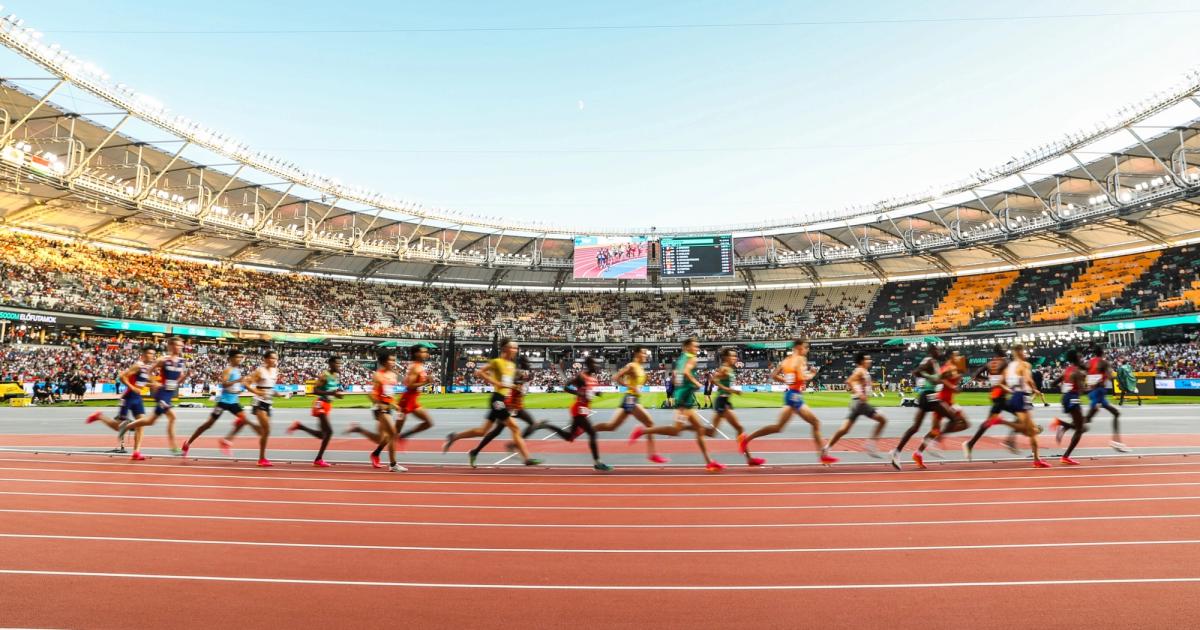
Kevin Morris / @KevMoFoto
How Grand Slam Track Works
Each of the GST’s four meets – or “Slams” – will host 96 athletes. Johnson and his team aim to contract 48 athletes as their core GST Racers (six groups of male Racers and six groups of female races, both across the six event groups), who will compete in four Slams per year. The athletes are selected by the GST Racing Committee. All Racers will receive an annual base compensation for racing in the events and will be eligible to earn additional prize money. To receive the full amount of each Racers’ base compensation they must participate in all four Slams.
The GST Racing Committee evaluates and targets Racers to sign based off global championship titles and medals, being ranked in the top 10 in their event, global following/fandom, and existing rivalries.
The other 48 racers entered in each Slam are the GST Challengers. Each Challenger will be paid an appearance fee on a Slam-by-Slam basis. The GST Racing Committee will select the Challengers based on recent performances and intriguing matchups. Challengers are also eligible for full prize money.
Racers and Challengers will compete in two events over three days during each Slam.
“It’s different from current track and field but very similar to thriving professional sports where there is a league and that is what Grand Slam Track is,” Johnson says. “We are a league of athletes. The best of the best. The best in the world. A very exclusive group of the best, fastest and most popular athletes in the world.”
The event categories are:
- Short sprints – 100m / 200m
- Short hurdles – 100m hurdles (F) or 110m hurdles (M) / 100 meters
- Long sprints – 200m / 400m
- Long hurdles – 400m hurdles / 400m
- Short distance – 800m / 1500m
- Long distance – 3000m/5000m
Example: In a hypothetical situation where Grant Holloway signs with GST, one day he’d race the 110m hurdles and then come back to compete in the 100 meters.
“It brings out the different skill sets of the athletes,” Johnson says. “These are all world-class athletes. They’re all the best in the world. Some of them will have a stronger event for one of the eight athletes and then for another one, the second event is the stronger event for that athlete. It’s their placing across both that will determine whether they win the Slam or not.”
The athlete’s place in each race is important as their place total across two events will determine their final placement score for that Slam.
The scoring table is as follows:
- First place – 10 points
- Second place – 8 points
- Third place – 6 points
- Fourth place – 5 points
- Fifth place – 4 points
- Sixth place – 3 points
- Seventh place – 2 points
- Eighth place – 1 point
If athletes tie with their placement score, the quickest combined time across the two events will determine the Slam winner.

Kevin Morris / @KevMoFoto
What’s At Stake?
The winner of each Slam category will earn $100,000 in prize money. If an athlete wins all four Slams in the course of a season, they could earn $400,000.
The prize money breakdown is as follows:
- 1st place – $100,000
- 2nd place – $50,000
- 3rd place – $30,000
- 4th place – $25,000
- 5th place – $20,000
- 6th place – $15,000
- 7th place – $12,500
- 8th place – $10,000
- By comparison, the current prize money structure of The Diamond League offers up:
$10,000 per meet and $30,000 in the final per event. Olympic gold medalists at the Olympics will get $50,000 for their victory for the first time at this year’s Summer Games in Paris. World Athletics also announced the Ultimate Championship, set to take place in 2026 and every two years after that, which will offer $150,000 to the winners.
“The track and field rich certainly aren’t as rich as the best athletes in the world in other sports and that’s what I’m here to change,” Johnson says. “I’ve seen the frustration. The athletes are the best in the world. Not only are they not compensated in that way because there is no structure to do so but they’re not recognized as well as they should be for their greatness whereas their cohorts in other sports are at a much greater scale. I’ve seen the frustration as well with fans because they’re supporting those athletes. They love those athletes and then they find out, ‘Oh! My favorite athlete is financially struggling and they’re the best in the world.’”
Each Slam is independently scored and athletes are awarded prize money at each one. Previous point totals and finishes do not carry over to the next Slam.
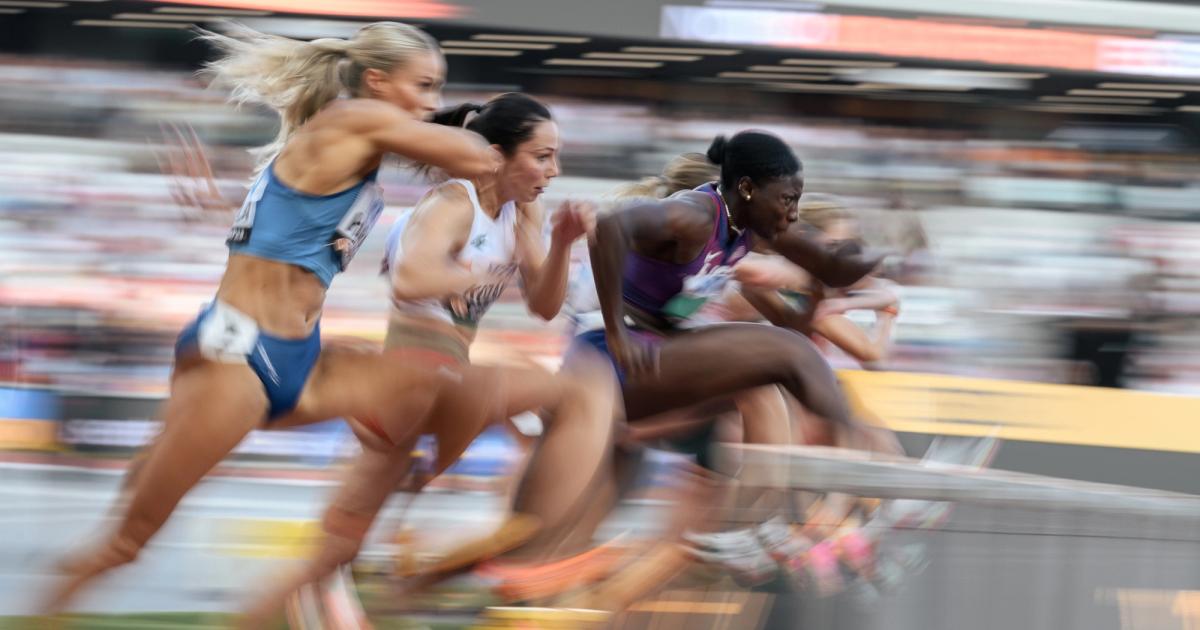
Johnny Zhang / @jzsnapz
What makes this different from the Diamond League?
The Diamond League is currently billed as track and field’s premier racing circuit. While it is a series of high-caliber meets yielding many world records and thrilling races, there is little continuity from meet to meet. (Aside from the points earned along the way that will garner a spot in the Diamond League final at the end of the season.)
The men’s 100m field in Oslo can look very different from the one in Eugene. Races can sometimes turn to time trials to chase world records or Olympic/World standards. Some of the top stars opt to not compete in the Diamond League entirely. (More on that shortly.)
Grand Slam Track is stressing head-to-head competition among the best athletes instead of a focus on winning times. However, all four Slams will meet World Athletics regulations so that performances will be eligible for ranking points and standards. The league is also supportive of its Racers running globally in other meets.
“The reason I don’t see ourselves as a competitor is compared to anything else out there… what we’re bringing is very unique and it’s its own thing,” Johnson says. “There were like 2,500 athletes that competed at the World Championships in Budapest last year. That’s 2,500 basically professional athletes in the sport. You do need a lot of meets to satisfy that number of athletes. I don’t think people understand how many people are considered professional and elite in this sport. You have to have a lot of meets because those people need somewhere to compete. Our athletes are the best of the best… Nothing exists until now that gives them their own unique and exclusive league for them to compete in.”
Also of note:
– Races will not have rabbits or pace lights.
– No hip numbers or bibs will be utilized.
– Racers will compete in their own sponsored kits.
As noted in the press release: “Grand Slam Track has no affiliation or sponsorship agreement with any shoe company; all shoe companies are considered to be important stakeholders and partners in the promotion of our Racers.”
Why Are There No Field Events?
Of the new track and field ventures that have popped up in recent months, GST joins Alexis Ohanian’s 776 Invitational in solely focusing on track events. Neither will feature the throws or jumps.
“Our reasoning for no field events is that one of the things that we understand about modern sports – and this is one of the rules that was absolutely critical in developing this whole product: one event at a time,” Johnson says. “We will never stray from that. The athletes in those different events, in order for them to be on that stage that we want them on, they deserve to have our undivided attention on them. In that two-and-a-half-hour window, which is our live television/broadcast and live in-person event window, we can’t put field events in there and fit it in, if we’re going to do one event at a time and that’s something that we are adamant about.”
When and Where Will The Slams Take Place?
Earlier this year, World Athletics announced that the World Championships will mark the end of every outdoor track season. GST will take place within the April to September window. Johnson says it will skew heavily toward the beginning of the season.
Two of the four Slams will be based in the United States. Los Angeles has been revealed as one of the Slam host cities The other three host cities will be announced later this summer.
“The U.S. is a real opportunity for us,” Johnson says. “That’s something that’s been talked about for quite some time. Seb Coe and World Athletics want to grow the sport and need the sport to grow in the U.S. and that’s something we’re trying to focus on to help grow the sport.”
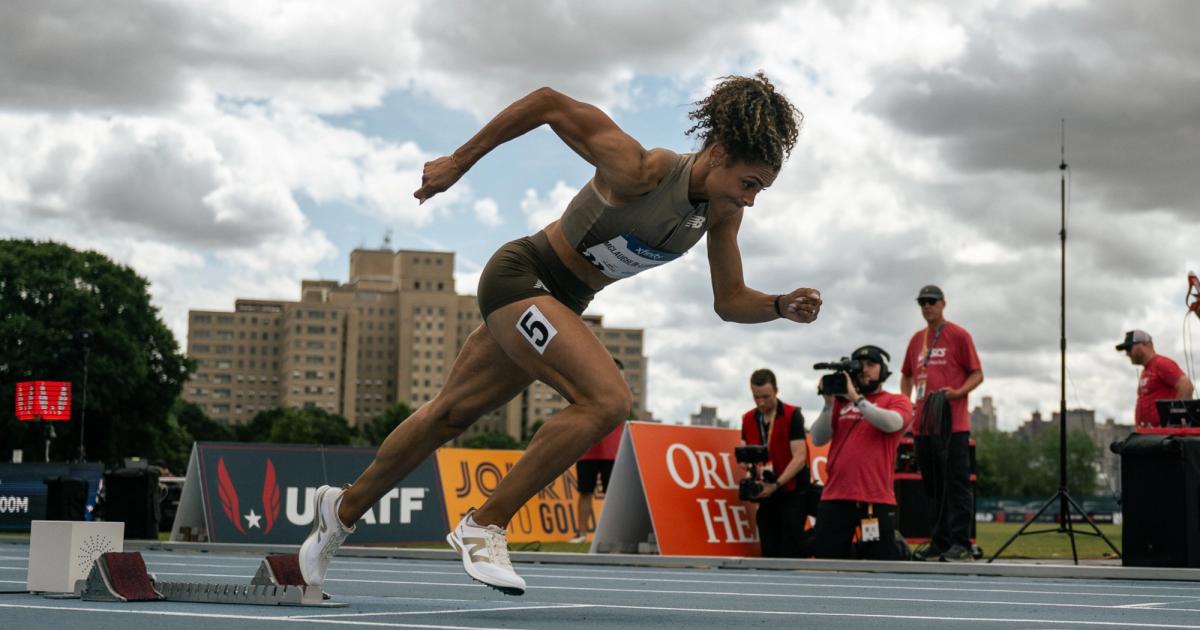
Johnny Zhang / @jzsnapz
The Sydney McLaughlin-Levrone Signing
Last month, McLaughlin-Levrone made an appearance on USA Track and Field’s Podcast, where she said. “I feel like there’s not enough money in our sport to really push it the way that we want to, so we need to bring people in who are going to invest in us to market ourselves better like a tennis, NFL or NBA. I think things are in the works that will make that happen.” At the end of the conversation, she hinted that she would be happy to be part of an opportunity to grow the sport.
In addition to the financial benefits of competing in the league, GST announced that its Racers will be able to have access to content and data services team as well as “inclusion in the league collective, group licensing and new revenue opportunities. GST racers are compensated under contract to race and promote the league and receive additional marketing and brand support.”
The frequent criticism of McLaughlin-Levrone and her coach Bobby Kersee tends to stem from the fact that fans mostly only see her race at the championship stages. Since becoming the 400 meter hurdles Olympic champion in 2021, she has only competed at one Diamond League meet and it was in the 400 meters as she prepared to contest the event at last summer’s U.S. Championships.
This year, McLaughlin-Levrone has raced more often with a low-key opener at Mt. SAC in April, a stunning 22.07 personal best in the 200m at the LA Grand Prix, a then-world lead of 52.70 in the 400m hurdles and a 48.75 for the second-fastest 400m in U.S. history.
Enlisting as a GST Racer will now ensure McLaughlin-Levrone competes at four Slams, the U.S. Championships and global championships.
“When an athlete says I want to be recognized and compensated for being the best in the world, well to do that, you have to put yourself out there to entertain a financial source to be compensated. That financial source is fans,” Johnson says. “If you look at any other sport – the Dallas Mavericks, which is my team. I was a former owner of that team but I still follow them after we sold them. They can’t just show up when they want to show up and play. They have a schedule that is mandated by the league and they have to show up and play on those days. That’s why the athletes are making millions of dollars a year because they are an entertainment source to the fans, who are a revenue source. That is what a real, true professional league provides. The athletes who get that and understand that will certainly buy in.”
As noted on their website, Femke Bol is among the athletes GST is targeting as a Racer. Bol and McLaughlin-Levrone have only ever raced head-to-head twice: at the Tokyo Olympic 400m hurdles final and 2022 World Championships 400m hurdles final. The hope would be that through GST, they’d race head-to-head more often before the championships.
How to Watch
No finalized streaming or television broadcast details were shared at the launch.
However, Johnson shared his vision for changing how the sport is presented.
“From a presentation standpoint, we will be able to present the sport and our events in a way that is modern and that allows us to bring the fan – not just the avid fan but the casual fan as well – into the sport and understand the sport and be able to be entertained by it,” Johnson says. “That’s being able to have time during our broadcasts to be able to set up the races, bring people in and help them understand the players, the athletes and their stories, why they’re here and why they have an opportunity to win this. Then, letting that race take place and then allowing us to celebrate that race on the other side. The avid fan is already invested in the athlete and wants that athlete to win, we want that casual fan to have that same feeling.”
Johnson also said that the league would be open to partnerships and opportunities for emerging content creators. CITIUS MAG is among the first to partner with the league, as we plan to share some of our creative storytelling efforts across podcasts, live shows, articles/newsletters and social media to enhance the league’s digital presence and tap directly to our loyal and engaged audience of track and field fans.
“It’s been frustrating for me and I’m sure it’s been frustrating for you guys seeing some of the incumbents of the sport and some of the powers that be in the sport previously being a bit skeptical about welcoming new storytellers, which just runs completely against and counter to my experience as an entrepreneur,” Johnson says. “If I’ve got people who are willing to go out and sell my product for me and I can create an economy for them as well, there’s no better situation when I can provide to them that allows them to be able to sell my product and then they can actually monetize the content that they’re using, there’s just no better situation. We will certainly embrace all forms of media – the traditional media but certainly new media, influencers and fans who want to talk about this sport.”
How to follow along
You can follow the league at @grandslamtrack on all social media platforms. More details also available at grandslamtrack.com

Chris Chavez
Chris Chavez launched CITIUS MAG in 2016 as a passion project while working full-time for Sports Illustrated. He covered the 2016 Olympics in Rio de Janeiro and grew his humble blog into a multi-pronged media company. He completed all six World Marathon Majors and on Feb. 15th, 2025 finally broke five minutes for the mile.
